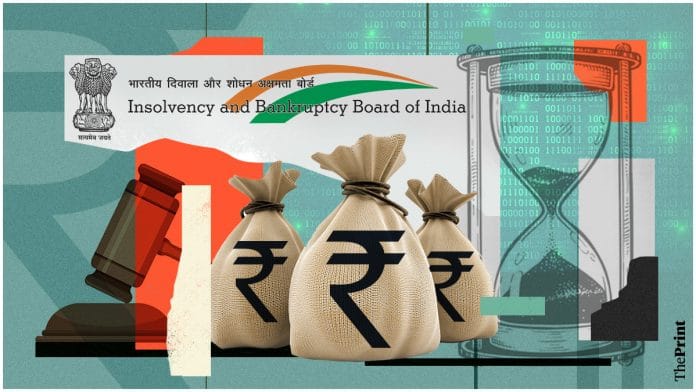New Delhi: A tech platform for insolvency, strengthening existing tribunals, and increasing the number of tribunals to improve outcomes are among the Centre’s proposed reforms to the insolvency regime in the 2024 Union Budget.
As a part of the proposed reforms to the “manufacturing and service sector”, which it has called a key priority, Union Finance Minister Nirmala Sitharaman proposed several sweeping changes to the insolvency regime that has it roots in the Insolvency and Bankruptcy Code (IBC) passed in 2016 by Parliament during the NDA era.
The IBC aimed to consolidate the fragmented legal framework for insolvency and bankruptcy, replacing the earlier framework which was governed by a variety of laws, such as the Sick Industrial Companies Act, 1985.
Back then, the IBC was hailed as a consolidated legislation providing for insolvency and bankruptcy of companies, partnership firms, and individuals. The government then set up a specialised regulator, the Insolvency and Bankruptcy Board of India, which was to be assisted by licenced ‘insolvency professionals’ to assist in the process.
On Tuesday, Sitharaman said that the IBC regime helped in direct recovery of more than Rs 3 lakh crore to creditors and helped in the resolution of more than 100 companies.
Now, the government has proposed an integrated tech platform, strengthening of existing tribunals, and setting up of tribunals to speed up recovery of debt.
One of the key proposed changes is the setting up of an integrated tech platform to improve outcomes of the insolvency process. The platform is designed to ensure timely processing, consistency, and transparency of the insolvency process, which includes several stages requiring actions from stakeholders.
“An Integrated Technology Platform will be set up for improving the outcomes under the Insolvency and Bankruptcy Code (IBC) for achieving consistency, transparency, timely processing and better oversight for all stakeholders,” Sitharaman said.
This suggests that the Centre is proposing a single window portal for the insolvency process, which will provide visibility of the process to stakeholders such as creditors.
The Centre has also proposed amending the IBC regime to strengthen existing tribunals, set up new ones, and reform the insolvency process.
“Appropriate changes to the IBC, reforms and strengthening of the tribunal and appellate tribunals will be initiated to speed up insolvency resolution,” the finance minister said. “Additional tribunals will be established. Out of those, some will be notified to decide cases exclusively under the Companies Act.”
It may be recalled that the IBC was conceptualised as a time-bound process, setting an outer limit of 330 days for completion of the legal proceedings. The government has introduced the changes possibly to ensure that such timelines are met.
Sitharaman also said that steps will be taken to strengthen and reform debt recovery tribunals. The government, she said, would also take steps to establish more debt recovery tribunals, which will help in quick collection of debt.
Debt recovery tribunals are bodies outside the traditional court system empowered to recover advances made by individuals.
“Steps for reforming and strengthening debt recovery tribunals will be taken. Additional tribunals will be established to speed up recovery,” she said.
Further, Sitharaman has also proposed that services of C-PACE be extended to limited liability partnerships (LLP). Limited liability partnerships are entities which are envisaged as a hybrid of traditional companies and partnerships, which offer more flexibility.
C-PACE is designed to assist with the closure process by centralising the removal of names, which is called the “strike-off” process. The model is currently operating for companies and has now been proposed to be extended to LLPs.
The C-PACE will help reduce the closure time of LLPs who intend to close voluntarily, Sitharaman said.
(Edited by Tony Rai)
Also Read: Karnataka just latest to push ‘local’ quota in pvt sector. How other states have tried it






